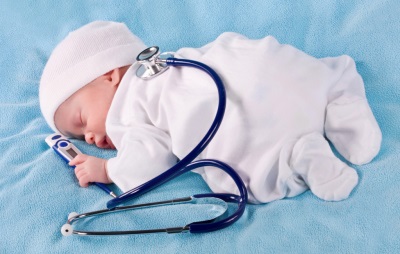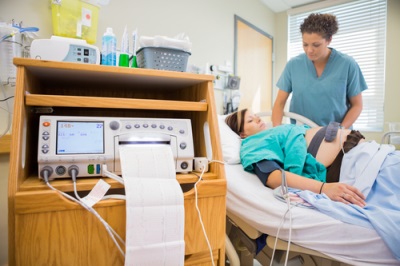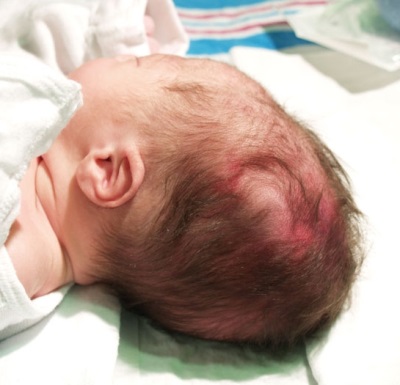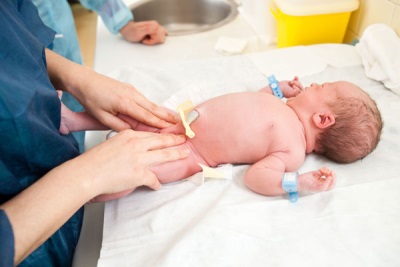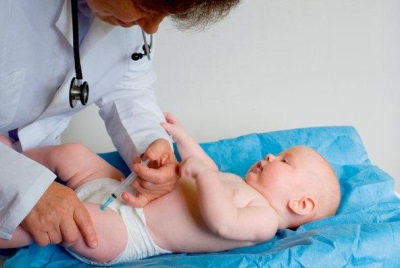Birth injuries of newborns
The birth process is quite unpredictable and can result in complications for both the mother and the baby. One of these complications are birth injuries.
What is it?
Birth injuries of newborns are called pathological states that arise during the course of birth, in which tissues or organs are damaged in a newborn, as a result of which their functions are impaired.
Types of injury
All injuries during childbirth are divided into:
- Mechanical. These are bone fractures, head injuries, generic tumors, various hemorrhages, spinal cord and central nervous system injuries, cephalohematomas, cervical spinal injuries, nerve injuries, traumatic brain injury and other pathologies.
- Hypoxic. They are represented by damage to the internal organs and tissues of the brain, which hypoxia and asphyxia during the birth process.
Depending on the location of the lesion, injuries are highlighted:
- Bones.
- Soft tissue.
- Nervous system.
- Internal organs.
Common causes
To the appearance of mechanical birth trauma lead various obstacles in the advancement of the fetus through the female birth canal.
The cause of hypoxic injuries is the complete or partial termination of oxygen access to the child.
To the predisposing factors for which child's risk of injury during childbirth increasesinclude:
- Large fruit weight.
- Prematurity of the child.
- Narrow pelvis pregnant.
- Pelvic injuries to the mother.
- Incorrect previa.
- Older age mom.
- The swiftness of the birth process.
- Delaying the birth process.
- Stimulation of childbirth.
- Cesarean section.
- The use of obstetric benefits and devices.
- Torsion
- Chronic fetal hypoxia.
- Problems with the umbilical cord (entwined, small length).
For a detailed explanation of how prenatal injuries occur in a baby, see the video:
Symptoms
- The most common injuries at birth are presented. swelling of the soft tissues of the baby’s head, which is called a generic tumor. She looks like a slight swelling on the head of a newborn. With such edema, babies may also develop hemorrhages in the skin in the form of small dots.
- Cefalohematoma manifests hemorrhage in the head area of the baby. It arises due to the displacement of the skin and rupture of blood vessels, resulting in blood collected under the periosteum of the cranial bones. The tumor appears immediately after birth and in the first two or three days its size increases.
- Muscle hemorrhage often appears in the neck (in the sternocleidomastoid muscles) and looks like a moderately dense formation of a small size (for example, as large as a nut or as small as a plum).
- Among bone fractures, the clavicles (often the right) are most often damaged without displacement. With such an injury, when feeling the body of a newborn in the place of a broken clavicle, swelling, crunching and soreness are revealed. Much less common fractures of the femur or humerus. With them, movements in the limbs are impossible, their lethargy and soreness is noted.
- Nerves can be damaged due to hypoxia, and mechanical injury. The most common problem with nerves is the defeat of the facial nerve. Damage to the brachial plexus is also common.
- Traumatic birth injuries may have different severity. If severe, the infant may die in the first days or even hours after delivery. Also, in case of severe injury, organic changes in the tissues of the nervous system are possible, which manifest as paralysis, paresis, and development of mental retardation. Immediately after delivery, the baby may develop convulsions, depression of the sucking reflex, breathing problems, intense crying, tremor of the arms and legs, insomnia, and other symptoms of CNS arousal. Next, the baby becomes sluggish, his cry and muscle tone weakens, the skin turns pale, the child sleeps a lot, sucks poorly, spits up a lot.
- Internal injuries are less common than other types of injuries and usually do not manifest themselves during the first time after birth. The baby may damage the adrenal glands, spleen or liver. The condition of the baby deteriorates from the third to fifth day of life, when the hematoma in the damaged organ is torn, which leads to internal bleeding and anemia.
Effects
The prognosis of birth injuries is influenced by the severity of the damage, the timeliness of the treatment, and the correctness of the selected therapy. If the child was diagnosed on time and immediately started to be treated, in 70-80% of cases he fully recovers.
The least dangerous damage to soft tissues and bones. A generic tumor usually disappears in one to two days without any consequences for the child’s body. A small cefalohematoma resolves to 3-7 weeks of life without treatment. Due to hemorrhage in the neck muscles in a child appears torticollis, in which the head of the baby leans towards the formation, and the chin is directed in the opposite direction. This condition is corrected by a special massage.
The effects of damage to internal organs are affected by the size of the hematoma. It is equally important how preserved the function of the affected organ. For example, a large hemorrhage in the adrenal glands in many children leads to the development of chronic insufficiency of these glands.
The consequences of hypoxic injuries depend on the length of the period when the child was deficient in oxygen. If such a period was long, there may be a severe degree of delay in intellectual and physical development, caused by the death of nerve cells in the brain. Children can develop cerebral palsy, hydrocephalus, seizures, nerve damage, encephalopathy and other pathologies. With a moderate degree of hypoxia in grown-up children, fatigability, headaches, dizziness, and problems with posture may appear.
About what hypoxia is and how to avoid it, see the following story:
Therapy
In most cases birth injuries are diagnosed in the maternity hospital, where the child is immediately prescribed the necessary treatment. For fractures, the damaged area is immobilized. In a serious condition, the baby is fed through a tube with colostrum, which is decanted by the mother.

In the treatment of injuries, depending on the type of damage, agents are used for vessels and the heart, drugs affecting the central nervous system, hemostatic agents, oxygen therapy, administration of vitamins and glucose.
For some types of injuries, surgical treatment is required. For example, with a rapidly increasing cephalohematoma, a child is punctured. Surgical treatment is indicated for hematomas of the internal organs.
What can you do?
A newborn who has suffered an injury during childbirth must be supervised by a pediatrician, as well as by narrow specialists, depending on the type of injury (neuropathologist, orthopedic surgeon). He is assigned various rehabilitation procedures, such as massage and gymnastics courses.
Mom should strictly follow all the prescriptions and recommendations of specialists, not forgetting about proper care for the baby.
Prevention
The best way to prevent birth injuries in an infant is to monitor a pregnant woman and timely deal with her health problems. Expectant mother is:
- Plan pregnancy, excluding smoking and alcohol before conception, and during gestation.
- Be examined and time to treat chronic diseases.
- Monitor nutritional balance and taking vitamins during pregnancy.
- Walk on birth preparation courses.
- Try not contact with sick people and do not self-medicate.
- Regularly visit a gynecologist in female consultation.
- Choose a good medical facility for childbirth, having communicated in advance with his experts.

